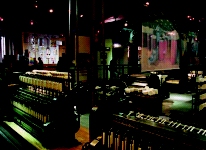
It was the stipulation by the Heritage Lottery Fund that institutions must consult the public that has wrought the biggest change in attitudes and energy toward market research amongst the museums and galleries sector, writes Susie Fisher.
Suddenly, institutions which have previously provided little opportunity for a frank exchange of views between providers and their audiences are discovering that qualitative research is able to benefit them in a number of ways, in particular by:
? providing an external discipline to help organisations articulate their plans from the audience perspective
? letting professionals hear the experiences and feelings of both their visitors and their non-visitors
? creating a common forum in which interpreters, curators, designers and directors can integrate the visitor into the planning process
For organisations embracing qualitative research there is a realisation that insight can feed rather than dictate. Institutions still have to make judgements, but these will now be informed rather than purely subjective. The central role of qualitative research is to build bridges between visitors and visited, between consumer and product: this is the same exercise whether the product is genetic engineering or the Victorian Gothic. Once you know the visitor?s natural take on the subject, you can guide them across this bridge and through to a treasure house of which they were previously unaware.
A key way in which qualitative research is making its biggest contribution to museums and galleries is in formative evaluation. This research in the early stages of a project can prove valuable in a variety of ways, in particular in understanding how much the public already knows; what is familiar to it; where their misconceptions are and where their emotions lie. On the basis of this insight, the subject can be explored using touchstones which already mean something to the visitor. Formative evaluation can also prove useful in more unexpected areas, such as helping marketing departments to entice visitors to a new exhibition - so when the Museum of Science and Industry in Manchester discovered that the excitement behind their new Textiles Gallery lay in the world of fashion and the feel of material, they gave it the title ?Fibre, Fabrics and Fashion? and featured brilliant silk banners and fashion shots in their advertising.
Museums that have undertaken qualitative research with vigour and have innovated have clearly benefited from it. A shining star has been the Science Museum in London. Under the patient vision of Dr Ben Gammon and his team, working on the new Wellcome Wing, the museum has developed an effective internal system of audience advocates. These advocates reject confrontation as a way of operating with curators and design teams and are resolved instead to identify the ways in which they can best support their teams. The evaluation process for the Wellcome Wing took four years and involved three key stages: front-end evaluation; formative evaluation and summative evaluation. The result ? a 10,000m2 new extension incorporating four floors of exhibitions, an IMAX film theatre, and new retail and catering outlets ? has proved to be one of the most successful projects in the Science Museum?s 150-year history.

Susie Fisher is Director of The Susie Fisher Group. This article is based on a chapter in ?Qualitative Research in Context?, published in conjunction with the Association for Qualitative Research w: http://www.aqr.org.uk. For further information, contact Catherine Bostock or Lucy White at Camargue t: 020 7636 7366.



